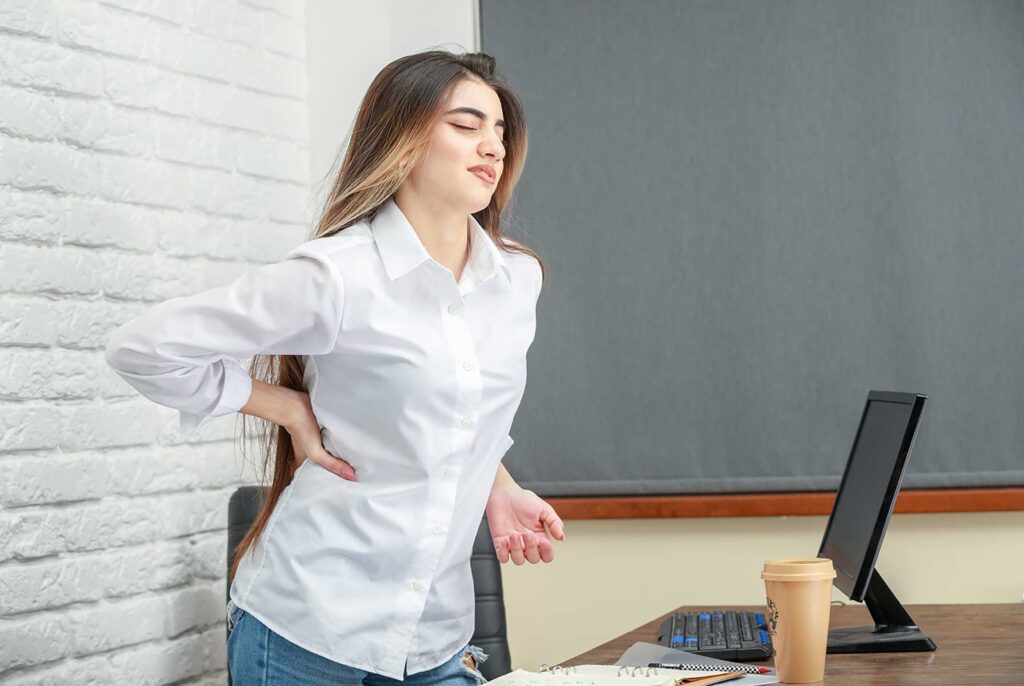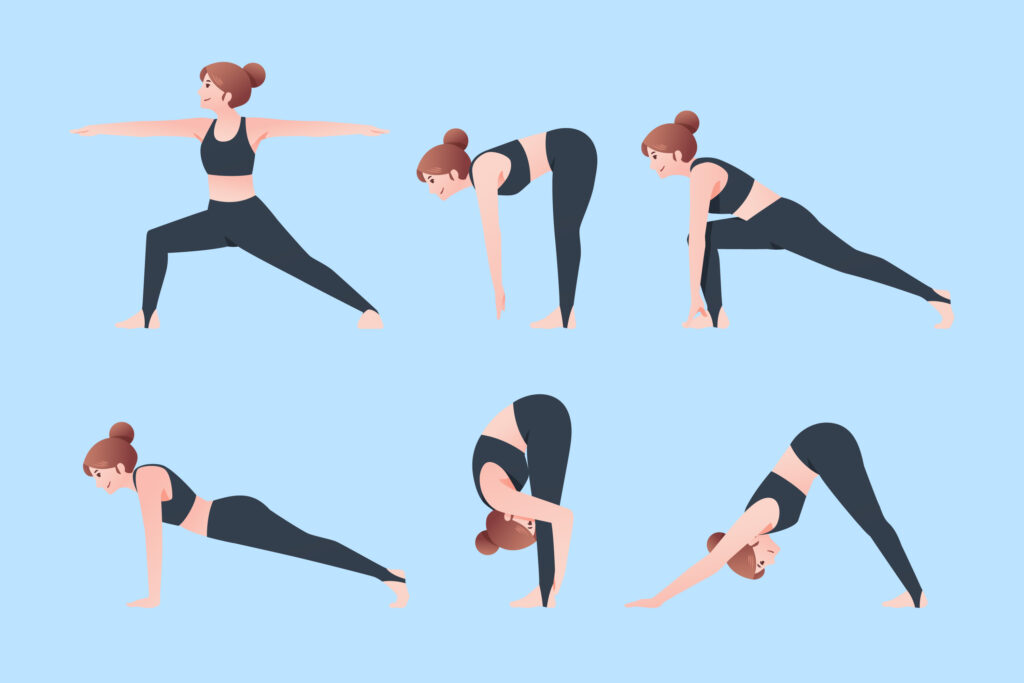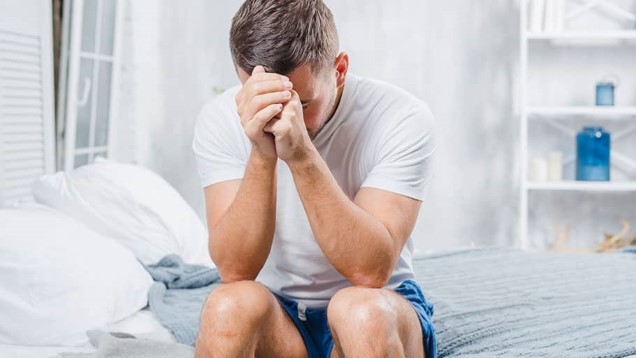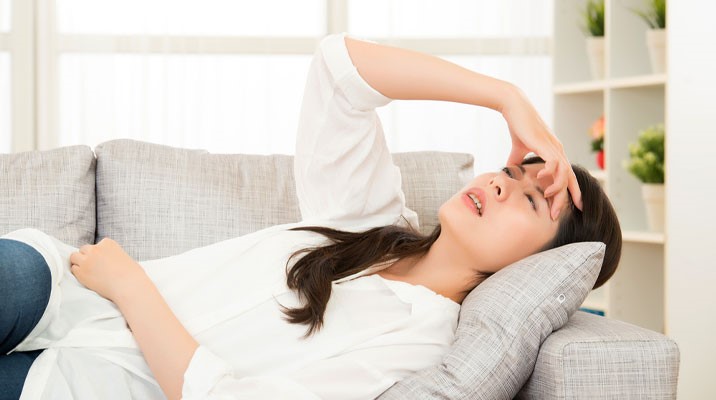
8 best yoga poses for lower back pain relief : Causes & remedies
Visit these pages and apps to continuous your journey.
Yoga is a beneficial practice for lower back pain relief. It can improve flexibility, strengthen muscles, and promote relaxation, which are key in alleviating discomfort. However, for the best treatment, it’s crucial to practice yoga poses for lower back pain relief under the guidance of a qualified instructor. This is especially important if you have existing back issues, as proper guidance ensures you’re doing the exercises correctly and safely.
8 Simple Stretches for Lower Back Pain Relief
Discover the healing power of yoga with these soothing poses designed to alleviate back pain and promote overall well-being. Whether you’re experiencing discomfort from muscle strain, arthritis, or a sedentary lifestyle, these gentle yoga poses can help you find relief and restore balance to your body.

1. Hug Your Knee:
This pose helps stretch the lower back, relieving tension. Lie on your back, hug one knee into your chest while keeping the other leg extended. Hold for 30-60 seconds and switch legs.
2. Arch and Round Pose:
This gentle flow helps improve flexibility and ease tension in the back. Start on all fours, arch your back up like a Dog on the inhale, and drop it down on the exhale.
3. Upside-Down V Stretch
This pose stretches the entire back and strengthens the arms and legs. Start on all fours, lift your hips up and back, forming an inverted V-shape.
4. Restful Child's Pose:
This resting pose gently stretches the back and helps release tension. Kneel on the floor, sit back on your heels, and then lower your torso forward, reaching your arms out in front.
5. Snake Stretch:
This backbend strengthens the back muscles and may relieve sciatica. Lie on your stomach, place your hands under your shoulders, and lift your chest off the ground.
6. Bridge Stretch:
This pose stretches the spine, chest, and neck, and can help relieve backaches and headaches. Lie on your back, bend your knees, and lift your hips up towards the ceiling.
7. Sit and Reach Pose
This pose stretches the spine, shoulders, and hamstrings. Sit with your legs extended, reach for your toes, and fold forward from the hips.
8. Twisted Rest Pose:
This pose stretches the spine, hips, and chest, and can help relieve lower back tension. Lie on your back, bend your knees, and drop them to one side while twisting your torso in the opposite direction.
“Consistency and targeted approaches can relieve lower back pain and improve daily life.”
Causes of Back Pain
Lower back pain is a common ailment that can be caused by a variety of factors, ranging from muscle strains to more serious conditions like herniated disks or spinal stenosis. Understanding the causes and treatments for lower back pain is crucial for managing and alleviating discomfort.
1. Muscle or Ligament Strain:
Resulting from sudden movements or improper lifting, this can lead to discomfort and stiffness in the lower back.
2. Disk Issues:
Bulging or ruptured disks can press on nerves, causing pain. This can occur due to aging, injury, or lifting heavy objects.
3. Lifestyle Factors:
Being overweight, smoking, poor posture, and lack of exercise can contribute to back pain.
4. Arthritis:
Osteoarthritis can affect the lower back, leading to inflammation and pain. It can worsen with age and wear and tear.
5. Skeletal Irregularities:
Conditions like scoliosis, where the spine curves abnormally, can lead to back pain, especially if the curve is severe.
6. Osteoporosis:
Weakening of the bones can lead to compression fractures in the spine, resulting in pain and reduced mobility.
7. Muscle Spasms:
Involuntary contractions of muscles in the back can result from overuse, injury, or muscle imbalances.
8. Accidents and Injuries:
Falls, car accidents, or sports injuries can cause strains, fractures, or other injuries leading to back pain.
8 best home remedies for lower back pain relie8
Here are some of the best home remedies for lower back pain, including tips for improving your sleeping posture:
- Hot and Cold Therapy: Apply a cold pack for the first 48 hours to reduce inflammation, then switch to a hot pack to relax muscles and improve blood flow.
- Stretching: Gentle stretching exercises can help relieve tight muscles and improve flexibility in the lower back.
- Strengthening Exercises: Building strength in the muscles that support the spine can help reduce pain and prevent future episodes.
- Good Posture: Maintaining proper posture, especially when sitting for long periods, can help prevent and alleviate lower back pain.
- Massage: Gentle massage can help relax tight muscles and improve blood flow to the affected area.
- Yoga or Pilates: These exercises can improve flexibility, strengthen muscles, and promote relaxation, all of which can help reduce lower back pain.
- Weight Management: Maintaining a healthy weight reduces stress on the lower back and can help prevent and alleviate pain.
- Sleeping Posture: Sleep on your side with a pillow between your knees to keep your spine aligned, or on your back with a pillow under your knees to reduce pressure on your lower back. Avoid sleeping on your stomach, as it can strain your neck and lower back.
Lower back pain can be caused by various factors, including muscle strain, disk problems, arthritis, skeletal irregularities, osteoporosis, muscle spasms, accidents, injuries, and lifestyle factors.
FAQs
Yes, yoga can help lower back pain. It can improve flexibility, strengthen muscles, and promote relaxation, which can all reduce pain and discomfort in the lower back.
Yoga is a practice that combines physical postures, breathing, and meditation to improve health and well-being.
Yes, yoga can help with lower back pain by improving flexibility, strengthening muscles, and promoting relaxation.
Related
some frequent questions
- Can yoga help lower back pain?
- How do you Flex Your Back in yoga?
- Which exercises good for lower back pain?
- Which yoga pose is best for back pain?
- What is upward-facing dog yoga?
- Can yoga help you lose weight?
- Does yoga burn a lot of calories?
- Can yoga help balance hormones?
- Does yoga improve heart health?
- Does yoga improve mental health?


